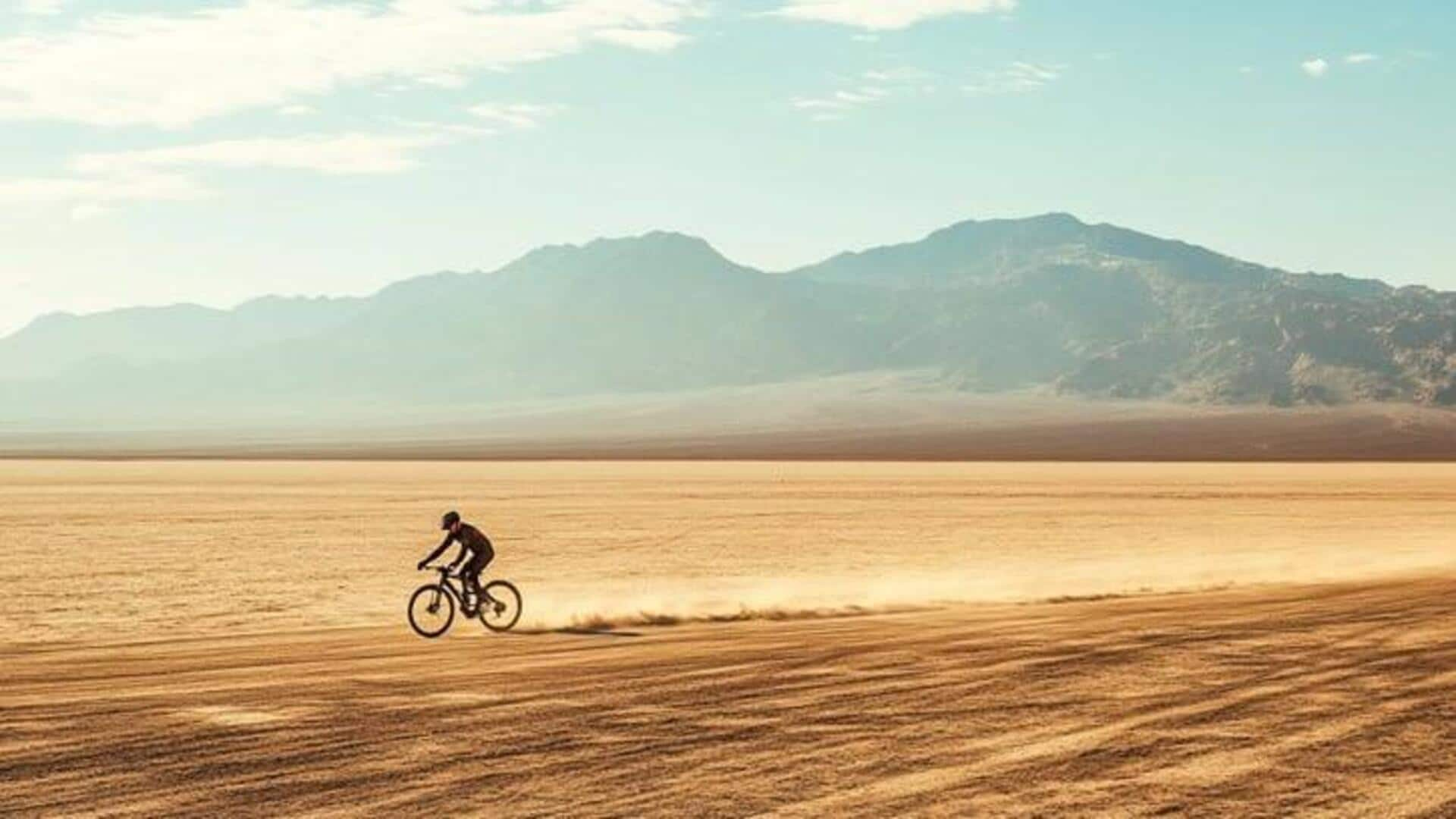
Desert cycling 101: The ultimate guide
What's the story
Desert cycling trails provide a unique combination of adventure and breathtaking views. These trails, which are comparatively less explored, offer the cyclists an opportunity to witness the raw beauty of desert terrains. From the challenging paths to breathtaking views, desert cycling is an exhilarating way to connect with nature. Here are some key aspects of desert cycling that make it an unforgettable experience for enthusiasts seeking new challenges and vistas.
#1
Choosing the right trail
Choosing the right trail is essential for a successful desert cycling adventure. Keep in mind factors like difficulty level, distance, and terrain type when selecting a trail. Beginners may opt for shorter routes with gentler slopes while experienced riders may look for more challenging trails with steep inclines and rough terrain. Look up trail maps and reviews from fellow cyclists to make an informed choice.
#2
Essential gear for desert cycling
Proper gear is non-negotiable for safety and comfort during desert cycling trips. A sturdy mountain bike designed for rough terrains comes recommended. Cyclists should also wear helmets, gloves, and protective eyewear to shield against sun glare and dust. Given high temperatures in deserts, hydration packs are vital; carrying enough water ensures you stay hydrated throughout your ride.
#3
Navigating weather conditions
Desert climates can be unpredictable, which is why it's important to understand weather patterns before heading out for a ride. Early mornings or late afternoons are perfect times because the temperatures are cooler than midday heat which can be intense in deserts like Sahara or Mojave where temperatures often exceed 40 degrees Celsius (104 degrees Fahrenheit). Checking weather forecasts helps avoid facing unexpected conditions like sandstorms or extreme heat waves.
#4
Respecting local wildlife
While exploring desert trails, it's important to respect local wildlife by keeping a safe distance from animals like lizards or snakes. This minimizes human impact on natural habitats, ensuring ecosystems remain undisturbed. Join us in these adventures, respecting nature as we pedal into the unknown, discovering new realms under the vast open skies.